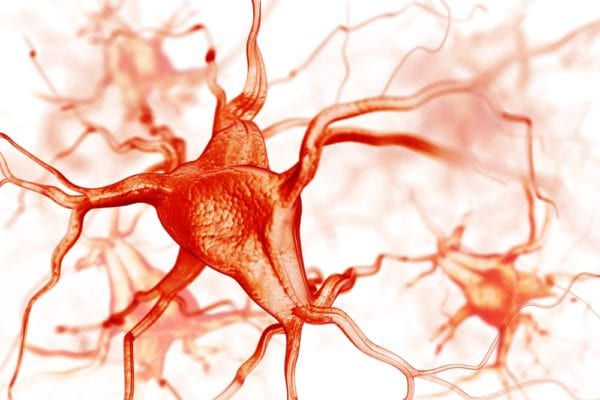
There has been a rising trend in the treatment of rheumatoid arthritis (RA) that involves nerve stimulation techniques to reduce inflammation. Recent research conducted by Kevin J. Tracey, MD, a neurosurgeon, and president and CEO of the Feinstein Institute for Medical Research, suggests that the inflammation associated with RA could be reduced by stimulating the vagus nerve.1,2
But as with any new treatment, there are certain benefits, risks, and specifications that one should consider before committing to this approach. Here are some things rheumatoid arthritis sufferers should know about nerve stimulation to make a personal treatment decision that’s right for them.
History of Nerve Stimulation
Clinical trials for the silver dollar-sized device that’s used for nerve stimulation date back to 2009. Dr. Tracey developed this device to stimulate over 80,000 fibers in the vagus nerve through an electrode system that extends to the neck.3 The goal of this treatment is to stimulate a nerve that runs from the brain stem to the stomach, known as the vagus nerve and can trigger inflammation.4
However, experimentation with vagal maneuvers is nothing new in the field of medicine.5,6 Vagus nerve stimulators have been implanted into the chest to reduce a rapid heart rate, for example, as well as to treat particular forms of epilepsy and prolonged depression. Studies on the effects of nerve stimulation for RA patients date back to the 1970s and 1980s, yet Dr. Tracey’s particular stimulators are still in the experimental phase for RA.
At least a dozen people with RA have agreed to have Dr. Tracey’s device implanted in their bodies for testing and possible relief.6,7 The devices require daily activation and are designed to become permanent fixtures in the body. Many of these patients have reported reduced pain, swelling, and tenderness in the joints, leading researchers to believe that the remedy could become available to the general public in Europe and the U.S. in the near future.
Benefits and Hopes of Nerve Stimulation
Unlike many other RA treatments, nerve stimulation targets the source of the problem, not just the symptoms. This type of stimulation activates the immune system and prevents the body from producing inflammatory proteins that cause RA.2,9
This approach may be a viable strategy for patients who have not responded to other forms of treatment because thus far, few serious side effects have been reported. Dr. Tracey has said that an added benefit of this device is that only needs to be turned on for about 15 minutes per day and doesn’t require frequent battery changes.
Nerve Stimulation Risks & Concerns
However, nerve stimulation therapy for RA patients does not come without its fair share of risks. When foreign devices are permanently implanted into the body, researchers may not fully anticipate their long-term effects, long-term viability, or what type of molecular events they could cause later in life.8
To avoid these risks, RA sufferers may opt for familiar and established sources of joint pain relief like over-the-counter JointFlex. RA patients should learn more about this potential treatment by reading the July 2016 study published in the Proceedings of the National Academy of Sciences and discussing symptoms and concerns with a medical professional who specializes in arthritis treatment.10
REFERENCES FOR NERVE STIMULATION FOR RHEUMATOID ARTHRITIS
1. Pavlov, V. A. & Tracey, K. J. (2012 December). The vagus nerve and the inflammatory reflex—linking immunity and metabolism. Nature Reviews Endocrinology, 8, pages 743–754. Retrieved November 2, 2018 from National Center for Biotechnology Information https://www.ncbi.nlm.nih.gov/pmc/articles/PMC4082307/.
2. Breakthrough first-in-human study shows vagus nerve stimulation significantly reduces rheumatoid arthritis symptoms, inhibits cytokine production. The Feinstein Institute for Medical Research. Retrieved November 2, 2018 from https://www.feinsteininstitute.org/2016/07/breakthrough-first-human-study-shows-vagus-nerve-stimulation-significantly-reduces-rheumatoid-arthritis-symptoms-inhibits-cytokine-production/.
3. Future rheumatoid arthritis therapy: Nerve stimulation. Arthritis Foundation. Retrieved November 2, 2018 from http://blog.arthritis.org/rheumatoid-arthritis/nerve-stimulation-therapy/.
4. Vagus nerve. Encyclopædia Britannica. Retrieved November 2, 2018 from https://www.britannica.com/science/vagus-nerve.
5. Howland, R. H. (2014 June). Vagus nerve stimulation. Current Behavioral Neuroscience Reports, 1, 64-73. Retrieved November 2, 2018 from National Center for Biotechnology Information https://www.ncbi.nlm.nih.gov/pmc/articles/PMC4017164/.
6. Fox, D. (2017 May 4). Can zapping the vagus nerve jump-start immunity? Scientific American. Retrieved November 2, 2018 from https://www.scientificamerican.com/article/can-zapping-the-vagus-nerve-jump-start-immunity/.
7. Andersson, U. & Tracey, K. J. (2012 March-April). A new approach to rheumatoid arthritis: Treating inflammation with computerized nerve stimulation. Cerebrum, 3, published online. Retrieved November 1, 2018 from National Center for Biotechnology Information https://www.ncbi.nlm.nih.gov/pmc/articles/PMC3574800/.
8. Révész, D, Rydenhag, B, & Ben-Menachem, B. (2016 July). Complications and safety of vagus nerve stimulation: 25 years of experience at a single center. Journal of Neurosurgery: Pediatrics, 18, 97-101. DOI: https://doi.org/10.3171/2016.1.PEDS15534.
9. Can nerve stimulation therapy help rheumatoid arthritis? Arthritis Foundation. Retrieved November 2, 2018 from http://blog.arthritis.org/rheumatoid-arthritis/nerve-stimulation-therapy-ra/.
10. Koopman, F, A., Chavan, S. S., Miljko, S., Grazio, S., Sokolovic, S., Schuurman, P. R., Mehta, A. D., et. al. (2016 July 5). Vagus nerve stimulation inhibits cytokine production and attenuates disease severity in rheumatoid arthritis. Proceedings of the National Academy of Sciences, 113, 8284-8289. Retrieved November 3, 2018 from 8284-8289.
